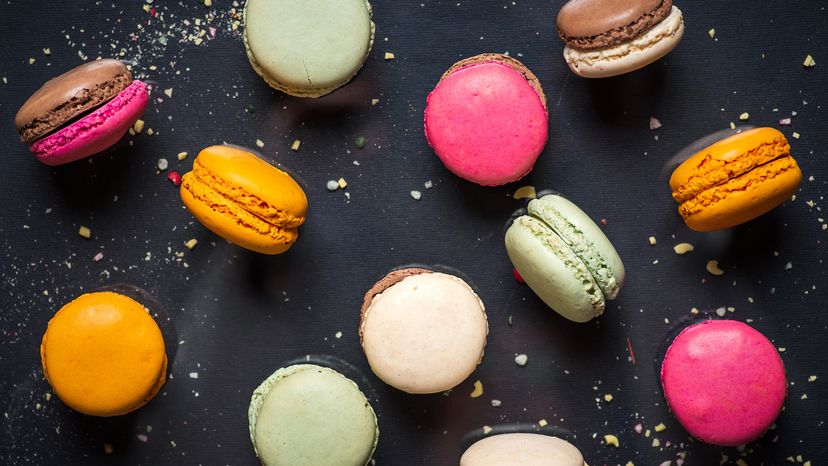Up until the mid-19th century, macarons and macaroons were the same thing — "small domed biscuit-like confections composed of sweet almonds, finely chopped, mixed with sugar and beaten egg whites, and baked lightly," as food historian Laura Mason described them in the Oxford Companion to Food.
"Macaroon" was simply the English spelling of the French word macaron, and both words come from the Sicilian word "maccarruni" (macaroni).
Here's a tip for correctly pronouncing the French word macaron: Say it as you would "macaroni," but drop the I.
An Italian Cookie
"Macarons are believed to have appeared in Venetian monasteries in the eighth century, after the Arabs had brought almonds to Italy," wrote Dr. Anne McBride, vice president of programs at the James Beard Foundation, in the Oxford Companion to Sugar and Sweets.
The cookies at that time likely resembled today's Italian amaretti cookies. There were many different recipes for macarons (as they were known in France) and macaroons (as they were known in England) throughout Europe.
A Jewish American Tradition
In the mid-19th century, recipes for coconut macaroons began appearing in Jewish American cookbooks following the introduction of shredded coconut to the United States.
"In America, a fad developed in the late 1800s for an exotic new food from India: coconut. Everyone was making trendy new desserts," wrote Dr. Dan Jurafsky, linguistics professor and author of The Language of Food, in Slate.
Originally, coconut macaroon recipes simply replaced the chopped almonds in macaroons with shredded coconut. Somewhere down the line, sweetened condensed milk was added.
A French Twist
In the early 20th century, almond macarons were still popular in France. According to McBride, "Pierre Desfontaines, the second cousin of Louis Ernest Ladurée, had the idea of piping ganache on an almond-based shell and topping it with another shell."
The colorful macaron parisien (Parisian macaron) became a hit at the Paris pastry shop Ladurée.
